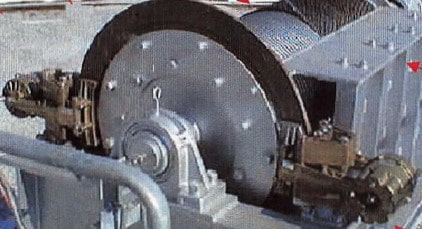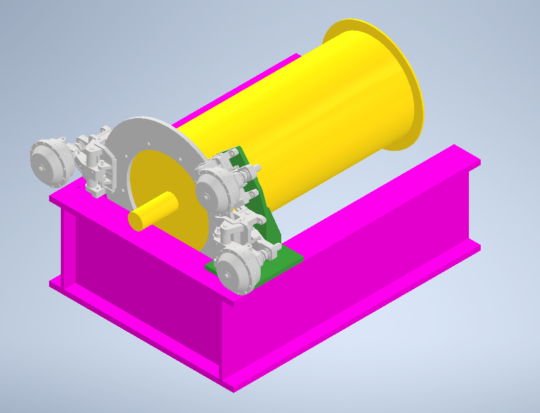Background:
A leading manufacturer of southern pine lumber in the Southeastern U.S. needed to upgrade the emergency brakes on the winch drum of their logging crane. While their crane was equipped with an emergency braking system, after a series of crane capacity upgrades, the braking system was not reliably holding the load, posing a serious safety risk to workers and harming overall productivity. The customer turned to Hindon, a trusted supplier of industrial brakes, for a retrofit solution that would increase the torque capacity and reliability of the crane emergency brakes.

The customer’s original hoist emergency braking system became undersized and unreliable after a series of upgrades that increased the crane’s capacity.
Application Challenges:
- Evaluation of previous braking system to determine brake failure mode
- Determine requirements of new braking system based on analysis of crane capacity upgrades
- Retrofit solution to use existing crane pneumatics
- Retrofit solution to design around dimensional constraints related to existing crane and braking system mounting structure
Solution:

The above is the proposed solution, which is a three caliper hoist brake system. Solutions such as this one often require a custom mounting stand to accommodate multiple brake calipers.
Hindon determined that after the customer’s crane capacity upgrades were made, the existing emergency braking system was not capable of sufficient torque to operate reliably.
After establishing the torque requirement for the upgraded braking system, Hindon determined that three pneumatic brake calipers were necessary. The need for three disc brake calipers created a challenge as the existing brake stand was only designed for two calipers. Hindon designed, analyzed, and supplied a three brake mounting console that was designed to easily replace the customer’s two caliper system. By using a thoughtfully designed custom brake mounting console, along with pneumatic disc brakes that were compatible with the customer’s existing pneumatics and brake disc configuration, the installation of this retrofit braking system was as streamlined and simple as possible.
The new three caliper braking system from Hindon provides improved safety and efficiency for the customer. The crane’s brakes are now able to reliably hold stop and hold the crane’s load in emergency situations, reducing the risk of accidents and allowing the customer to run safely and productively.